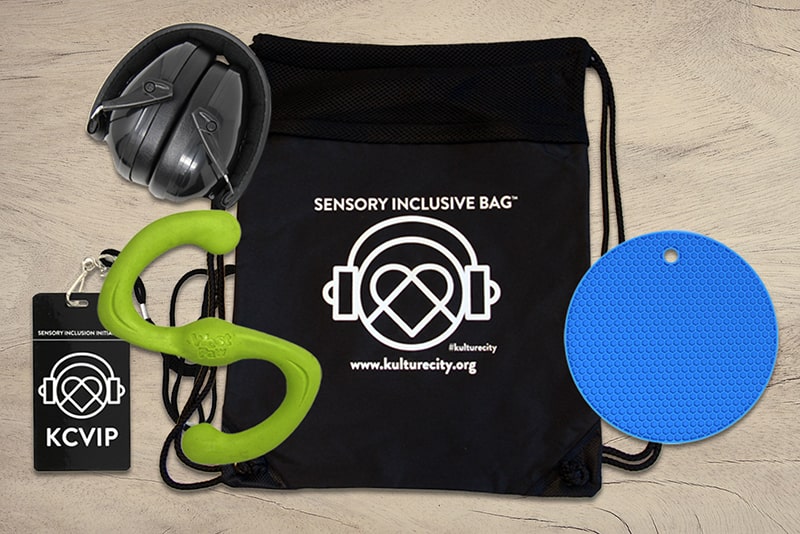
The Seattle Aquarium has partnered with KultureCity to improve our ability to assist and accommodate guests with sensory needs. Our objective is to provide an inclusive and seamless experience for all guests, including those with sensory needs, for all Aquarium experiences and events.
We strive to raise awareness of the needs and challenges faced by individuals with sensory processing disorders by supplying our team members with continuous training and offering the resources and accommodations below to our guests.

Sensory Bags and Weighted Lap Pads
Sensory bags (containing special KCVIP badges, fidget tools, noise-cancelling headphones and other resources) and weighted lap pads are available for checkout at no cost by leaving an ID at our Guest Services desk in Pier 59 or Ocean Pavilion.
Cleaning and safety
To protect the health and safety of our guests, staff and volunteers, sensory bags, sensory bag items and weighted lap pads are sanitized after each use.
KultureCity all-inclusive app
Download the KultureCity all-inclusive app for further assistance with your Aquarium visit:
Frequently Asked Questions
What is the Sensory Inclusive Initiative?
The sensory inclusion initiative is designed to help arenas, zoos, aquariums, museums, restaurants and other places of public attraction better entertain guests who might have sensory needs/sensory processing issues.
What are sensory need/processing issues?
People affected by sensory need/processing issues find noises, smells, lights and even crowds not only overwhelming from a sensory perspective but also sometimes physically painful. Because of this, these people often find themselves isolated from the community.
What is the difference between sensory-friendly and sensory-inclusive?
A sensory-friendly location is one in which all the potentially noxious stimuli has been removed. Because this is sometimes a difficult task, accessibility is therefore limited to the day and location of the sensory-friendly event. Sensory-inclusive liberates that to create daily accessibility with training, tools and other modifications that, although not removing the noxious stimuli, help people cope more successfully with potential sensory over-stimulation—thus ensuring an accepting and inclusive experience for all.
Who are some people that could be affected by sensory need/processing issues?
These could be people with PTSD, autism, early-onset dementia, anxiety, or those dealing with effects of strokes, just to name a few.
How does partnering with KultureCity help?
KultureCity helps by providing the necessary training to better serve people with sensory need/processing issues. KultureCity also provides signage, weighted lap pads, sensory bags that contain noise-cancelling headphones, fidgets tools and much more in order to truly create a welcoming experience.
What is the end result?
This initiative helps all individuals feel welcome and included at the Seattle Aquarium, and also helps us reach a portion of our community that has long been isolated.
How many people in the USA have a disability?
One in five: 16% of those have visible disabilities; the remaining 84% have invisible disabilities like PTSD, autism, dementia, the effects of strokes, etc. The common denominator for these groups is sensory issues.
